It's a New Day in Public Health.
The Florida Department of Health works to protect, promote, and improve the health of all people in Florida through integrated state, county, and community efforts.
Mumps in Florida
Mumps Surveillance
2020 Yearly Summary
The COVID-19 pandemic affected health care seeking behavior, which may be impacting the diagnosis and reporting of mumps that are shown in this report. For more information on the COVID-19 pandemic in Florida, please visit FloridaHealthCOVID-19.gov.
Mumps cases decreased below the previous 5-year average in April and remained low for the duration of 2020.
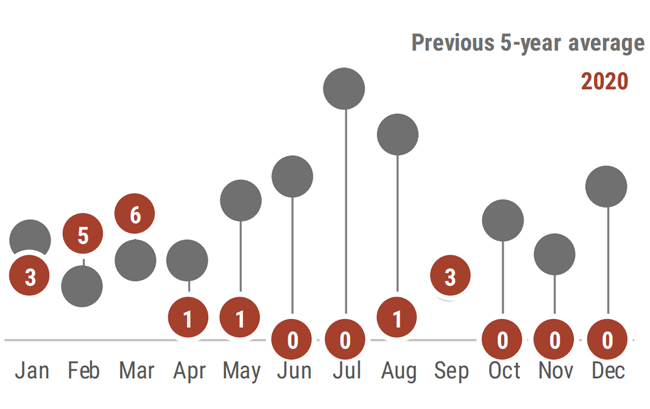
In 2020, Northwest Florida did not report any mumps cases while Alachua county had the highest cumulative incidence rate.
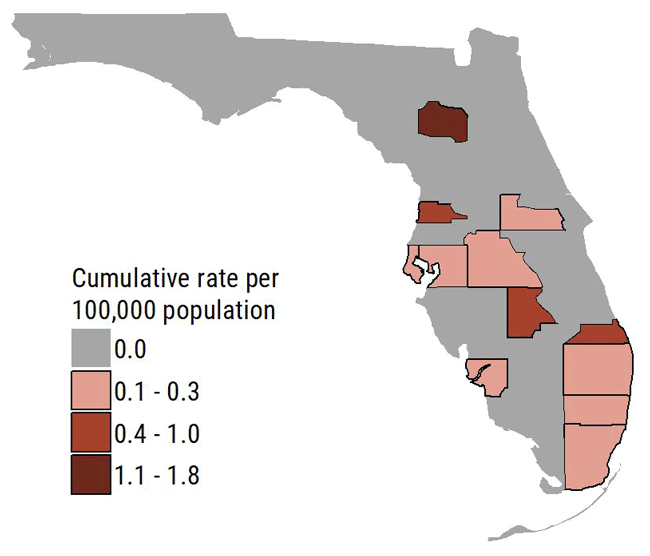
In 2020, 20 mumps cases were reported in 12 counties. Compared to 2019, this was a 85% decrease in reported mumps cases.
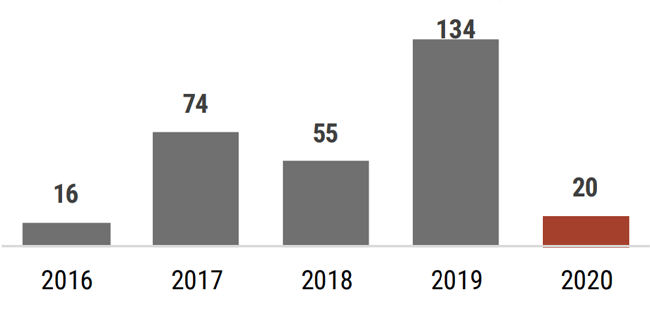
Mumps rates were highest among 19-34 years old at 0.3 cases per 100,000 population in 2020.
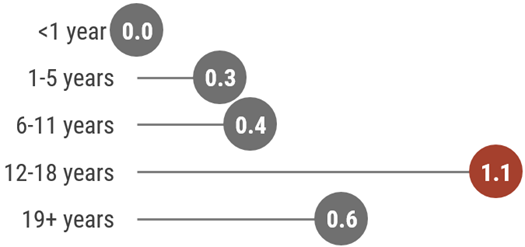
Seven outbreak-associated cases and 13 household associated cases were identified in 2020. Transmission setting was college or school for 35% of cases and unknown for the remaining cases reported.
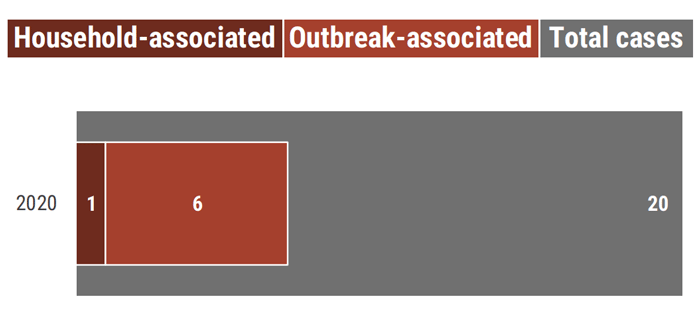
The majority of mumps cases in 2020 were not up-to-date on vaccinations or had unknown vaccination status.
Vaccination is the best way to prevent mumps infections.

*Note: This page contains materials in the Portable Document Format (PDF). The free Acrobat Reader may be required to view these files.



Connect with DOH